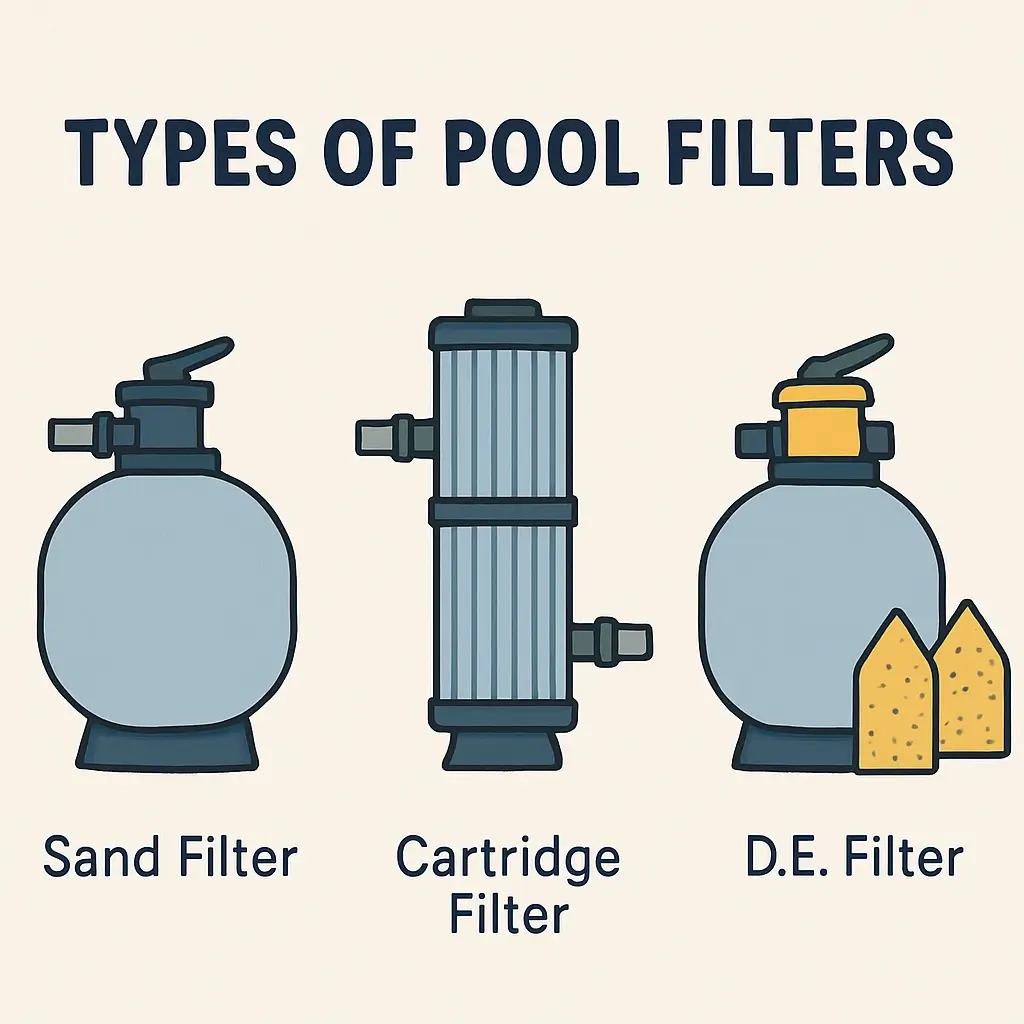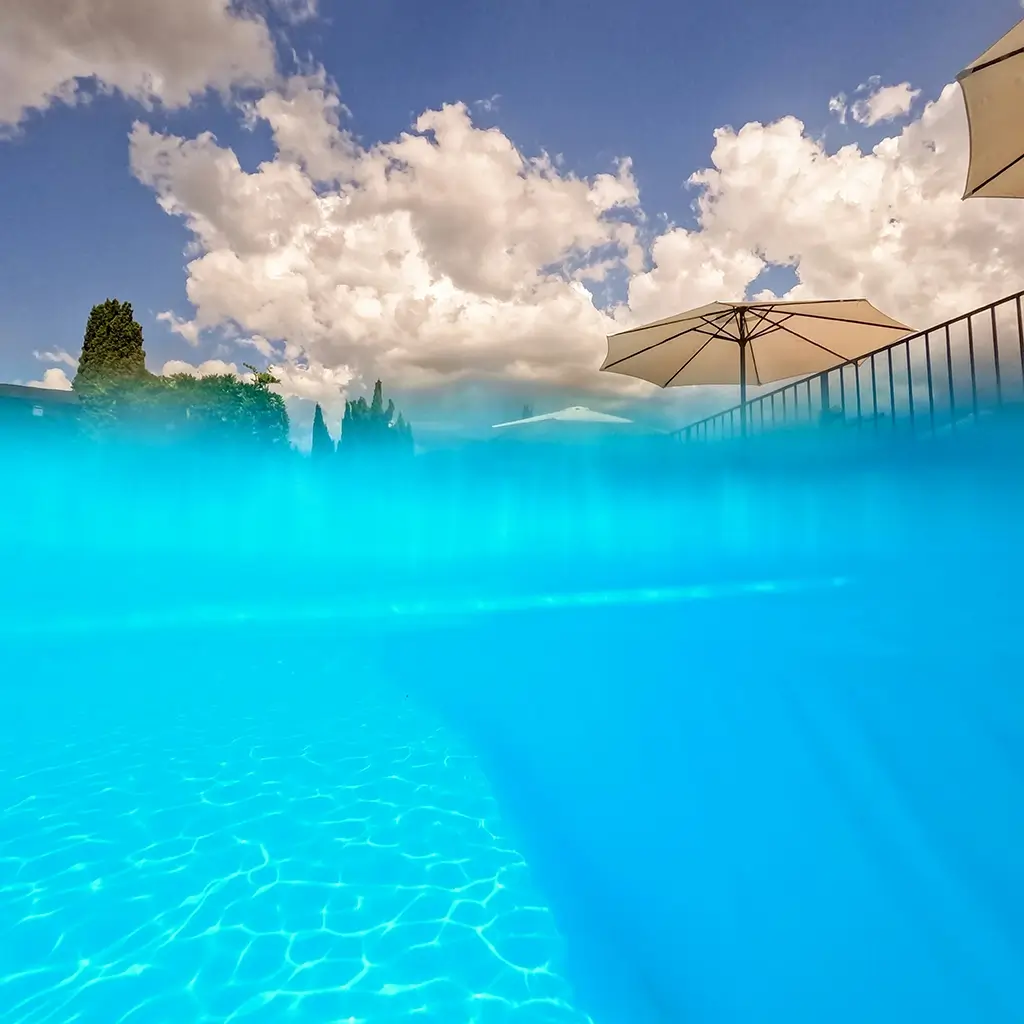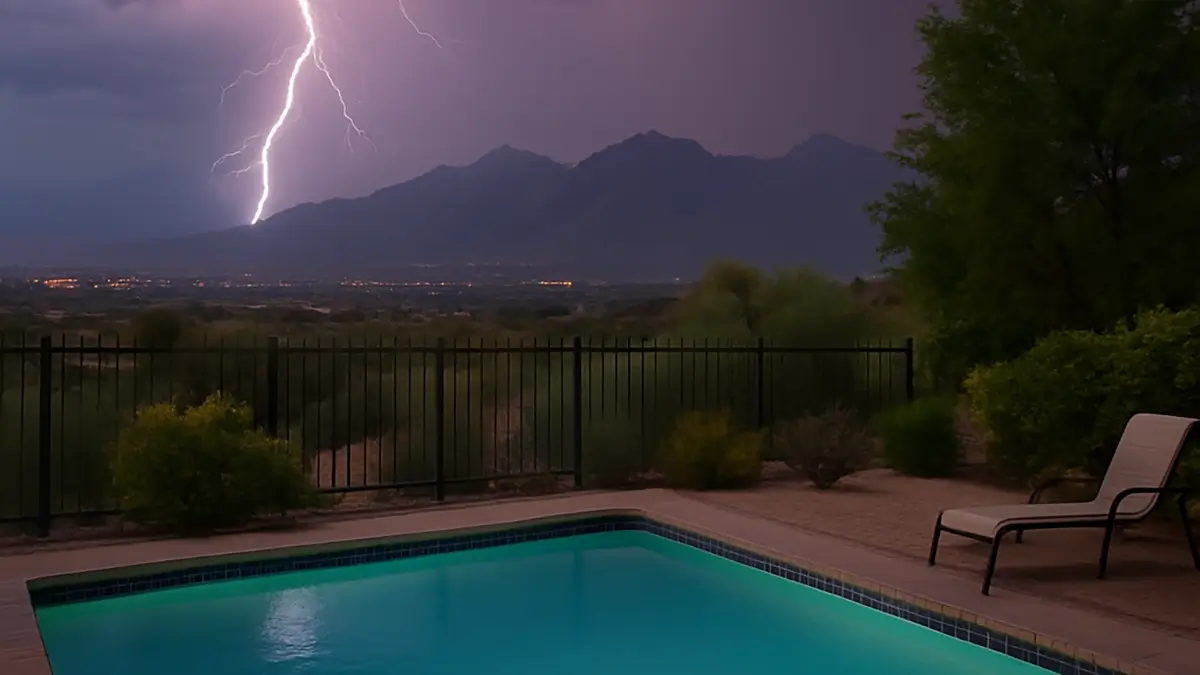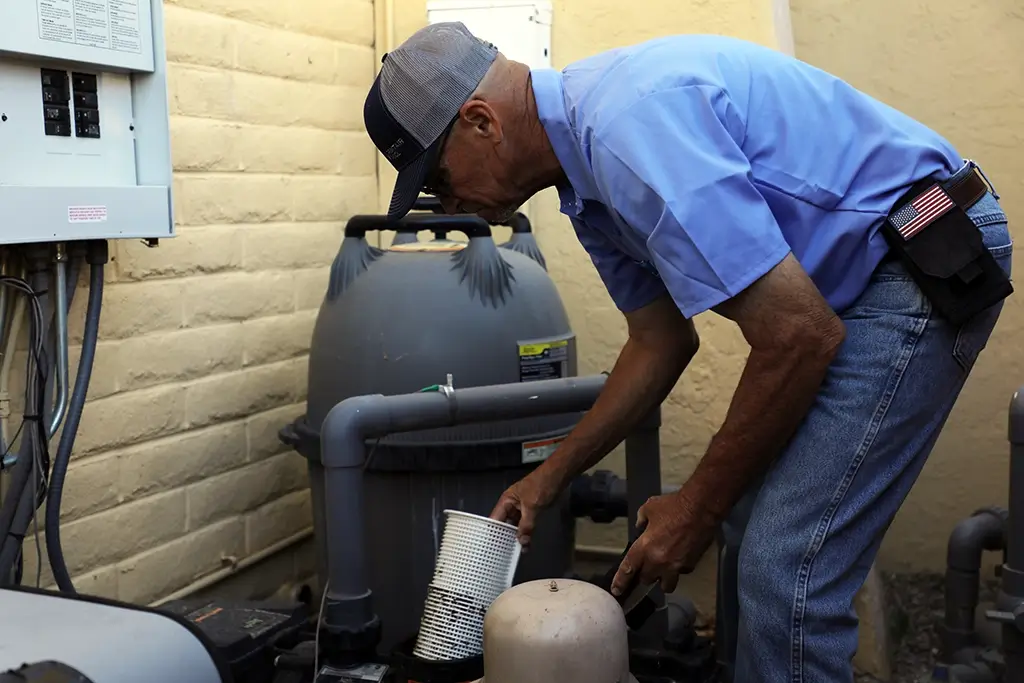Maintaining a clean pool filter is essential for a sparkling pool. It ensures safe swimming and prolongs equipment life.
Different filters, like sand, cartridge, and DE, need specific care. Each type has unique cleaning methods and schedules.
Ignoring pool filter maintenance can lead to clogged filters and poor water flow. This affects water quality and increases pressure.
A regular maintenance checklist helps keep your pool in top shape. It covers all aspects of pool filter care.
Understanding the basics of pool filter maintenance empowers pool owners. It helps them manage their pool effectively.
This guide will walk you through cleaning your pool filter. Let’s dive into the details!
Why Pool Filter Maintenance Matters
Regular pool filter maintenance is vital for clean and healthy water. It ensures your pool remains inviting and safe for swimmers.
Clogged or dirty filters can lead to murky water and unsanitary conditions. Without proper upkeep, algae and bacteria may thrive.
A well-maintained pool filter also conserves energy. Clean filters reduce pump strain, leading to lower energy consumption.
Moreover, routine maintenance extends your pool filter’s lifespan. Avoid costly repairs and replacements with regular care.
Here’s why maintenance is crucial:
- Enhances water quality and clarity
- Reduces energy use
- Extends equipment life
- Prevents algae and bacteria buildup
Neglecting pool filter maintenance can result in bigger issues. Commit to a routine for a healthier pool experience. Your pool will reward you with clear water and worry-free enjoyment.

Understanding Pool Filter Types
Before diving into pool filter maintenance, it’s essential to understand the different types of filters. Each type has unique cleaning needs. Choosing the right maintenance approach begins with knowing your filter.
There are three main types of pool filters: sand, cartridge, and diatomaceous earth (DE). Each offers benefits and requires specific upkeep methods. Selecting the right filter depends on your pool’s needs and personal preferences.
Here’s a quick overview:
- Sand Filters: Use sand to trap debris. Require backwashing.
- Cartridge Filters: Use replaceable cartridges. Need regular rinsing and periodic replacement.
- Diatomaceous Earth (DE) Filters: Use DE powder for fine filtration. Need periodic disassembly for cleaning.
Understanding these types helps you maintain them effectively. Proper filter care ensures optimal performance and extends their lifespan.

Signs Your Pool Filter Needs Cleaning
A well-maintained pool filter keeps your pool water crystal clear and safe for swimming. However, filters can become clogged over time. Knowing when your filter needs cleaning is crucial.
Look out for these signs that your pool filter requires attention:
- Increased water pressure: A noticeable rise in pressure indicates blockages.
- Cloudy water: Water clarity issues often stem from dirty filters.
- Decreased flow: Reduced water flow can signal a clogged filter.
If you notice any of these issues, it’s time to clean your filter. Regular inspections can prevent more significant problems and ensure efficient pool filter operation. Maintain a schedule for cleaning to optimize performance.
Essential Tools and Safety Precautions
Maintaining your pool filter requires the right tools and a focus on safety. Ensuring you have the correct equipment simplifies the process.
Here are some tools you will need:
- Garden hose: For rinsing debris and cleaning filters.
- Soft brush: To gently scrub the filter without damage.
- Filter cleaning solution: Specialized solutions remove oil and grease.
Safety should always be a priority. Turn off the pool pump before starting any maintenance. Wear gloves and protective eyewear when handling chemicals. Familiarize yourself with manufacturer guidelines to ensure safe and effective cleaning.
Taking these precautions helps prevent accidents and ensures your pool filter maintenance is both effective and safe.
Step-by-Step Guide: Cleaning Cartridge Filters
Cartridge filters are popular due to their efficiency and ease of maintenance. However, they require regular cleaning to perform optimally.
First, ensure you turn off the pool pump. This is crucial to prevent any accidents while handling the equipment.
Remove the filter cartridge from its housing. Carefully lift it out to avoid causing any damage.
Rinse the filter with a garden hose. Direct the water between the pleats to remove surface debris effectively. Use gentle pressure to avoid tearing.
Consider using a filter cleaner for deep-cleaning. This helps break down oils and smaller particles trapped within the filter media.
After cleaning, inspect the filter for any signs of wear and damage. Replace if necessary to ensure the filter continues to function well.
Reassemble the filter system and restore power to the pool pump. Regular cleaning keeps your filter efficient, leading to cleaner pool water.
Step-by-Step Guide: Cleaning Sand Filters
Sand filters are effective at trapping debris, but they can become clogged over time. Regular maintenance is essential to keep them functioning properly.
Begin by turning off the pool pump. Ensuring it’s off is critical for safety and to prevent equipment damage.
Next, perform a backwash. Connect the backwash hose to the filter and set the valve to “backwash.” Run the pump for a few minutes until the discharge water becomes clear.
After backwashing, set the filter valve to “rinse.” This process cleans the sand bed and clears out any remaining debris. Let it rinse for about a minute.
Finally, return the valve to the “filter” setting. Turn the pump back on and check for normal operation.
Regularly cleaning your sand filter boosts its efficiency and extends its lifespan. This process helps maintain clear and sparkling pool water.
Step-by-Step Guide: Cleaning DE Filters
Diatomaceous Earth (DE) filters are known for their superior filtration capabilities. However, they require specific cleaning methods to maintain optimal performance.
Firstly, ensure the pump is switched off. This prevents any unwanted accidents or damage to the filtration system.
Next, release the pressure by opening the air relief valve. This step is vital for your safety during the cleaning process.
You’ll then need to backwash the filter. Set the multiport valve to “backwash” and run the pump until the waste water is clear.
Once backwashing is complete, add new DE powder. Refer to the manufacturer’s instructions for the correct amount needed for your filter model.
Finally, monitor the pressure gauge for proper operation. Regular DE maintenance keeps the filter running efficiently and extends its longevity, ensuring crystal-clear pool water.
Filter Cartridge Pressure Purge: What It Is and Why It Matters
A filter cartridge pressure purge is a crucial maintenance task. It helps keep the filter running smoothly and efficiently.
When the pressure rises above normal levels, it’s time for a purge. This process involves releasing trapped air and debris from the filter system.
- Improves water flow
- Reduces filter strain
- Enhances filtration performance
Regular purging minimizes stress on the filter and extends its lifespan. Incorporate this task into your regular maintenance routine for the best results.
Pool Filter Maintenance Checklist
Having a pool filter maintenance checklist is essential. It ensures all key tasks are completed regularly, keeping your pool clean and healthy.
Use this checklist as a foundation for your routine:
- Inspect pressure gauges
- Check for leaks or damage
- Perform regular cleanings
- Conduct a monthly pressure purge
Consistent attention to these tasks prevents issues from escalating. Adjust the checklist based on your pool’s specific needs and environmental conditions. Regularly updating your checklist ensures it remains effective and comprehensive.
Troubleshooting: Clogged Cartridge Filters and Common Issues
Dealing with a clogged cartridge filter can be frustrating. Often, it’s identified by decreased water flow or increased pressure. Quick troubleshooting is vital to prevent further complications.
First, inspect the filter for visible debris or buildup. This simple step can often identify the cause of clogging. Ensure you remove any large pieces trapped in the filter.
If the issue persists, consider these solutions:
- Soak the cartridge in a cleaning solution
- Use a soft brush for stubborn debris
- Rinse thoroughly after cleaning
Common issues might stem from improper cleaning methods or inadequate maintenance frequency. Regular inspection and proper cleaning techniques can mitigate these problems. Always follow the manufacturer’s guidelines for your specific filter type to ensure effective maintenance.

Pool Filter Maintenance Tips for Different Climates (Including Tucson)
Climate significantly impacts pool filter maintenance needs. In areas like Tucson, the dry environment can increase dust and debris accumulation. It’s essential to adjust your routine accordingly to maintain efficient operation.
Consider these tips:
- Increase cleaning frequency in dusty climates
- Monitor water levels closely in hot weather
- Shield filters from direct sun exposure to prevent wear
By tailoring your maintenance practices to your local climate, you enhance filter performance and extend its lifespan. Adapting your approach ensures better water quality and helps avoid potential issues caused by environmental factors.
When to Replace Your Pool Filter
Knowing when to replace your pool filter is crucial for optimal performance. Over time, filters can wear out, reducing their efficiency in cleaning your pool water. Keep an eye on your pool’s clarity and filtration speed.
Here are signs indicating a need for replacement:
- Persistent cloudy water
- Increasing backwash frequency
- Noticeable drop in circulation
Ignoring these signs might lead to more severe problems, such as pump damage or chemical imbalances. Regular inspections and timely replacements ensure your pool system remains functional and your swimming experience enjoyable.

Professional Pool Filter Cleaning vs. DIY
Deciding between professional cleaning and a DIY approach involves considering factors like time, expertise, and budget. Professional services can ensure thorough cleaning and expert inspection.
Consider these points before deciding:
- Experience level with filters
- Time availability
- Comfort level with maintenance tasks
Opting for a professional might be ideal for complex tasks, while DIY suits simple, regular cleaning.
Pool Filter Maintenance as Part of Swimming Pool Upkeep
Maintaining your pool filter is crucial for overall swimming pool upkeep. It ensures both clean water and a functional system. Proper maintenance extends the life of your pool equipment, saving you money and trouble in the long run.
Incorporate these tasks into your routine:
- Regular filter cleaning
- Pressure checks
- Inspection for damage
By integrating pool filter maintenance into your regular pool care tasks, you ensure a safe and enjoyable swimming experience for all. This proactive approach also helps in detecting potential issues before they escalate.
Conclusion: Keep Your Pool Filter—and Pool—at Its Best
Regular pool filter maintenance is vital for a healthy pool environment. A clean filter means better water quality and efficient equipment functioning. Make regular maintenance a habit, and you’ll enjoy clear, sparkling water every swim. This small effort pays off in comfort and safety. Keep your pool in top condition always.
